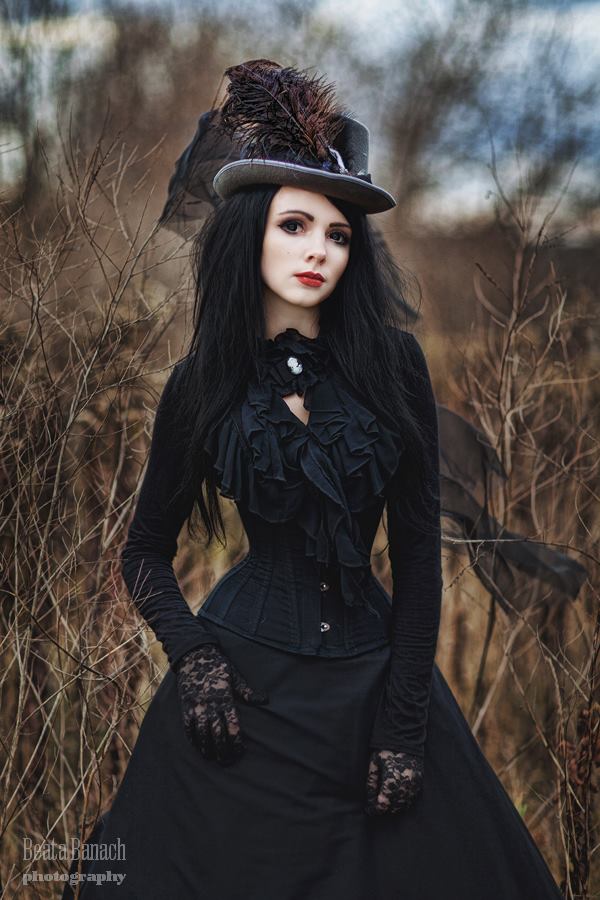Exploring The Allure Of Historical Gothic Clothing
Historical gothic clothing is a fascinating blend of art, culture, and history that captures the imagination of many. With its origins deeply rooted in the medieval period, this style encompasses a variety of garments and influences that have evolved over centuries. The bold, intricate designs and dark color palettes of gothic clothing reflect a unique aesthetic that resonates with those who appreciate its dramatic flair and historical significance.
As we delve into the world of historical gothic clothing, we uncover not only the trends and styles that defined the era but also the cultural and social underpinnings that shaped its evolution. From the opulent textures of velvet and lace to the striking silhouettes created by corsets and long flowing skirts, each element tells a story that is rich in symbolism and artistry.
For enthusiasts and scholars alike, historical gothic clothing serves as a window into the past, revealing insights into the lives of those who wore these garments. Whether you're a fashion aficionado, a history buff, or simply curious about this intriguing style, understanding the roots and implications of gothic clothing can enrich your appreciation for this timeless fashion trend.
What is Historical Gothic Clothing?
Historical gothic clothing refers to the fashion styles that emerged during the Gothic period, primarily from the 12th to the 16th centuries. Characterized by its ornate designs, dark colors, and an emphasis on dramatic silhouettes, this clothing often incorporated luxurious fabrics and intricate embellishments. It is a style that evokes a sense of mystery and romance, often associated with the art and architecture of the time.
How Did Historical Gothic Clothing Evolve Over Time?
The evolution of historical gothic clothing can be traced through various historical events and cultural shifts. As society transitioned from the medieval era to the Renaissance, clothing styles began to change, reflecting the changing attitudes towards art, religion, and personal expression.
- The early gothic period was marked by heavy use of dark fabrics and layered clothing.
- With the dawn of the Renaissance, there was a shift towards lighter materials and more elaborate designs.
- The Victorian era saw a resurgence of gothic influences, incorporating elements of romance and mystery.
What Materials Were Commonly Used in Historical Gothic Clothing?
Historical gothic clothing was made from various materials that contributed to its distinctive look. Some of the most common fabrics included:
- Velvet: Known for its rich texture and deep colors, velvet was a popular choice for gothic garments.
- Lace: Often used as an embellishment, lace added a delicate touch to the otherwise bold designs.
- Satin: The smooth, glossy finish of satin made it an appealing fabric for gowns and accessories.
Who Were Influential Figures in the Gothic Fashion Movement?
Throughout history, there have been several key figures who have influenced the gothic fashion movement. These individuals not only shaped the style but also contributed to the cultural understanding of what gothic clothing represents.
Can You Name Any Celebrities Associated with Historical Gothic Clothing?
Several celebrities and fashion icons have embraced historical gothic clothing, bringing it into contemporary fashion. Their unique interpretations of gothic styles have helped to revive interest in this historical aesthetic.
What Are Some Key Characteristics of Historical Gothic Clothing?
When examining historical gothic clothing, certain characteristics stand out, making it easily identifiable:
- Dark Color Palettes: Predominantly black, deep reds, and purples.
- Intricate Embellishments: Use of embroidery, lace, and ornate details.
- Layering: Clothing often features multiple layers to create depth and drama.
How Can You Incorporate Historical Gothic Clothing into Modern Fashion?
For those interested in incorporating elements of historical gothic clothing into their wardrobe, there are countless ways to blend past and present styles. Here are some tips:
- Accessorize: Add gothic-inspired accessories like chokers, corsets, and lace gloves to your outfits.
- Mix and Match: Combine modern pieces with vintage finds for a unique look.
- Experiment with Fabrics: Incorporate velvet, lace, and other gothic materials into contemporary designs.
Why Is Historical Gothic Clothing Still Relevant Today?
Historical gothic clothing continues to resonate with modern audiences for various reasons. Its rich history and dramatic aesthetic appeal to those who seek to express their individuality and embrace a sense of mystery. In addition, the resurgence of gothic fashion in contemporary culture through music, art, and film ensures that this timeless style remains relevant.
Conclusion: The Enduring Allure of Historical Gothic Clothing
In summary, historical gothic clothing is a captivating blend of artistry, culture, and personal expression. By exploring its evolution, key characteristics, and influential figures, we can appreciate the depth and beauty of this style. Whether worn in its traditional form or adapted into modern fashion, the allure of historical gothic clothing is undeniable, continuing to inspire and enchant those who encounter it.
You Might Also Like
Exploring The Legacy Of The Winans SiblingsUnveiling The Life Of Benicio Del Toro's Esposa
Unveiling The Mystery Behind Shane Stoffer's Age
Unraveling The Mystery Of Baby Lisa Irwin
Discovering The Enigma: Manon McCrory-Lewis
Article Recommendations
- Baby Alien Fan Bus
- Chilling Crime Scene Photos From Murder Of Gypsy Rose Blanchards Mother
- Dee Dee Blanchard Leaked Photos
- Dl Thugs
- Lisa Delarios Partner
- Taylor Morgan
- Connor Noon
- Hishashi Real Photo
- Livvy Dunne Leaks
- Tooturnttony Sextape

Steampunk Fashion Guide Gothic Victorian Elegance

Gothic Renaissance fashion, Fashion history, Historical dresses

Historical bustle dress Victorian Gothic Clothing, Victorian Gothic Wedding, Victorian Dresses